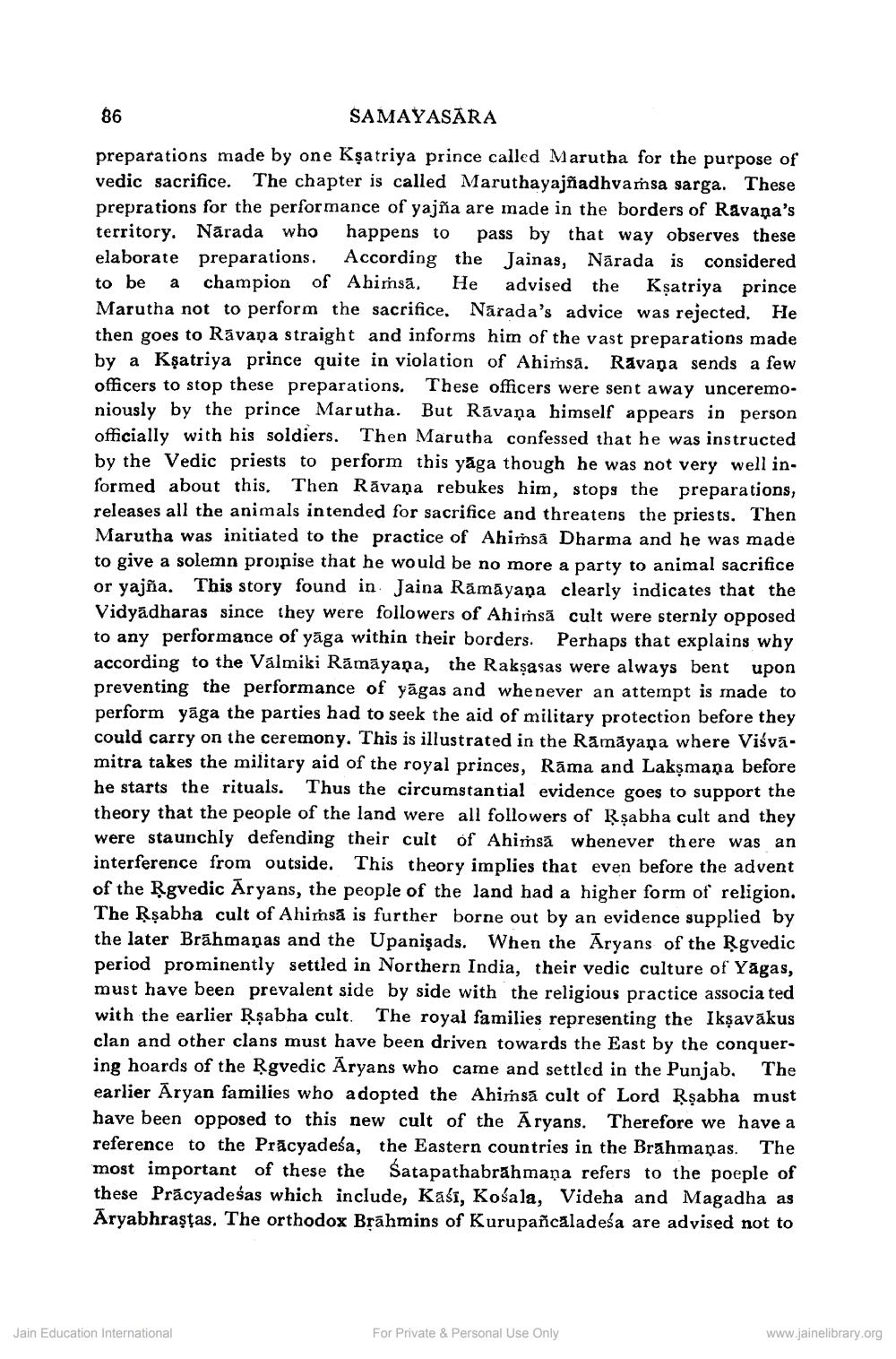________________
SAMAYASARA
preparations made by one Ksatriya prince called Marutha for the purpose of vedic sacrifice. The chapter is called Maruthayajñadhvamsa sarga. These preprations for the performance of yajña are made in the borders of Ravana's territory. Narada who happens to pass by that way observes these elaborate preparations. According the Jainas, Narada is considered to be a champion of Ahimsa, He advised the Ksatriya prince Marutha not to perform the sacrifice. Narada's advice was rejected. He then goes to Ravapa straight and informs him of the vast preparations made by a Ksatriya prince quite in violation of Ahimsa. Ravana sends a few officers to stop these preparations. These officers were sent away unceremoniously by the prince Marutha. But Ravana himself appears in person officially with his soldiers. Then Marutha confessed that he was instructed by the Vedic priests to perform this yāga though he was not very well informed about this. Then Ravana rebukes him, stops the preparations, releases all the animals intended for sacrifice and threatens the priests. Then Marutha was initiated to the practice of Ahimsa Dharma and he was made to give a solemn proinise that he would be no more a party to animal sacrifice or yajña. This story found in Jaina Rāmāyaṇa clearly indicates that the Vidyadharas since they were followers of Ahimsa cult were sternly opposed to any performance of yaga within their borders. Perhaps that explains why according to the Valmiki Rāmāyaṇa, the Rakṣasas were always bent upon preventing the performance of yāgas and whenever an attempt is made to perform yaga the parties had to seek the aid of military protection before they could carry on the ceremony. This is illustrated in the Ramayana where Viśvāmitra takes the military aid of the royal princes, Rama and Lakṣmana before he starts the rituals. Thus the circumstantial evidence goes to support the theory that the people of the land were all followers of Rsabha cult and they were staunchly defending their cult of Ahimsa whenever there was an interference from outside. This theory implies that even before the advent of the Ṛgvedic Aryans, the people of the land had a higher form of religion. The Rṣabha cult of Ahimsa is further borne out by an evidence supplied by the later Brahmanas and the Upanisads. When the Aryans of the Rgvedic period prominently settled in Northern India, their vedic culture of Yagas, must have been prevalent side by side with the religious practice associa ted with the earlier Rṣabha cult. The royal families representing the Ikṣavākus clan and other clans must have been driven towards the East by the conquering hoards of the Ṛgvedic Aryans who came and settled in the Punjab. The earlier Aryan families who adopted the Ahimsa cult of Lord Rṣabha must have been opposed to this new cult of the Aryans. Therefore we have a reference to the Pracyadeśa, the Eastern countries in the Brahmaņas. The most important of these the Satapathabrahmana refers to the poeple of these Pracyadeśas which include, Kasi, Kośala, Videha and Magadha as Aryabhraṣṭas. The orthodox Brahmins of Kurupañcaladeśa are advised not to
86
Jain Education International
For Private & Personal Use Only
www.jainelibrary.org




